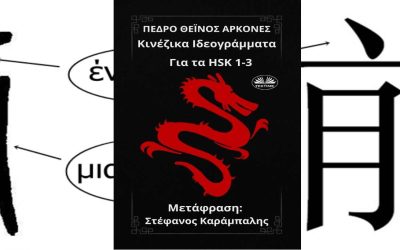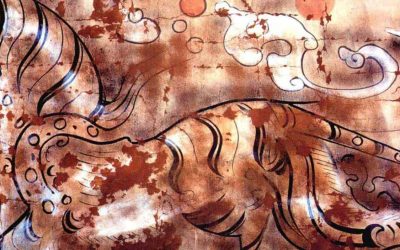Laozi’s Mother is the goddess who created the world
In Taoist thought, great mysteries are not explained with definitive statements, but with paradoxical images, fragmentary myths, and bodily metaphors. One such mystery is the origin of the world—and for Taoism, that origin does not lie in a creation “from the outside,” with a god shaping reality, but in an internal process of transformation, where chaos gives birth to order, and order returns to chaos.
Since the early centuries of our era, the figure of Laozi, the Old Master, began to change. He transformed from a wise philosopher into the incarnation of the Dao itself. He became both the origin and the body of the Dao. But in this cosmology, it is sometimes forgotten that he himself was born of a mother: the so-called Mother Li, the Jade Maiden of the Dark Mystery.
The Mother of Laozi as the creator of the universe
Mother Li is therefore the creator of the universe for the Taoists—a very special kind of creation, as it arises not from an external command but from the continuous transformations that nourish the Dao, from that endless cycle of creation and destruction that, for Taoism, is the very fabric of the world. In fact, much like in other cosmogonies, the birth of Laozi is accompanied by the death of Mother Li.
According to Taoist texts, Laozi was born without a father. He was conceived when his mother absorbed a drop of “heavenly dew.” During the day, she was pregnant; at night, the Old Lord would leave her womb to study the Dao. Thus, he spent more than eighty years in gestation, awaiting the perfect day to be born—a day when birth and death would no longer exist. Finally, he was born through his mother’s armpit, already with white hair and beard, and departed without looking back. Upon seeing him, his mother fell dead from the shock—or, in more benevolent versions, she ascended to the heavens in a chariot of clouds, after revealing to her son the secrets of immortality[1].
The Mother of Laozi is not a mere passive vehicle: she is the very matrix of the cosmos. “The Dao has taken form in her. Through her, it has revealed itself” (Schipper 2011: 150). She is the intermediary between non-being and being, between the undifferentiated void and the world of the “ten thousand things.”
But the myth does not end there. Some texts claim that it was Laozi himself who created his mother—that he first transformed into the Jade Maiden and then reabsorbed himself into her in order to be reborn. The maternal womb and the primordial chaos are the same: the point from which all multiplicity begins.
In Taoism, there is no external creator.
This myth suggests a theology profoundly different from the one we’re used to. In Taoism, there is no external creator. The universe was not made “out of nothing,” but emerged from chaos like a child from its mother. That is why creation is always transformation, constant mutation. Laozi himself declares: “I transform my body, passing through death to live again. I die and am reborn, and each time I have a new body.”
And yet, what dies is not lost—it is transformed. So taught Laozi’s mother in her brief dialogue before disappearing: that true life is spontaneous action, and that death is not an end but a passage to another form of existence. The Dao does not create—it transmutes. It does not impose form—it lets things become. And it does so, always, through the body of the Mother.
The universe is born from when the Dao manifests in a woman.
The importance of this scene cannot be overstated: the universe is born from chaos when the Dao manifests in a woman. In fact, the birth of Laozi is synchronized with the creation of the universe. At the moment of his birth, when the mother’s body opens, the “Heavenly Treasures in Vermilion Script” also appear—revealed scriptures containing the principles of the cosmos. As in other foundational myths (see the biblical Genesis), word and birth are simultaneous. But in this case, it is the female body that opens as a cosmic womb.
Although many modern readings of Taoism focus solely on Laozi as the author of the Daodejing, we must not overlook his mother. Through her, the cycle of constant transformation is revealed. Creation as a continuous process of death and regeneration. The figure of Mother Li is not a mythological detail: she is the very heart of the Taoist vision of the universe. She is the primordial matrix, the vessel of the Dao, the mother goddess who gives shape to all things.
Perhaps, in this vision, there is something profoundly liberating. Instead of an all-powerful god who creates from outside, we find a universe born like a child in the womb of a nameless mother, without beginning or end. A universe that is ourselves. A body that dies and is reborn. A mystery that reveals itself just when we allow it to be.
[1] This post is based in the information provided by Schipper, Kristofer. The Wholeness of Chaos: Laozi on the Beginning. In Schipper et al. China’s creation and origin myths. Brill. 2011.
About me: I have spent 30 years in China, much of the time traveling and studying this country’s culture. My most popular research focuses on Chinese characters (Chinese Characters: An Easy Learning Method Based on Their Etymology and Evolution), Matriarchy in China (there is a book with this title), and minority cultures (The Naxi of Southwest China). In my travels, I have specialized in Yunnan, Tibet, the Silk Road, and other lesser-known places. Feel free to write to me if you’re planning a trip to China. The travel agency I collaborate with offers excellent service at an unbeatable price. You’ll find my email below.
Last posts
The book Hanzi for HSK 1-3 now available in Greek language
The book “Hanzi for HSK 1-3” now available in Greek language This April, the translation of my book Hanzi for HSK 1-3 has been published in the main digital bookstores in Greece. The Greek version of this book, from the pen of Stefanos Karampalis, has been one of...
Portrait of a Mandarin in 1800
Portrait of a Mandarin in 1800 This was the year in which a very interesting book was published, which through 60 portraits, tried to show some aspects of life in China to the western public. A book now in the public domain, from which we adapted "A Mandarin of...
The art of laying out gardens among the Chinese
The art of laying out gardens among the Chinese In the 1740s, William Chambers travelled on three trading voyages to China with the Swedish East India Company. He was the first European to study Chinese architecture methodically. In a book published in 1757, Designs...
The secret treasure of ancient Chinese art
The secret treasure of ancient Chinese art China has a fabulous artistic treasure hidden from the eyes of the public and specialists. It is her best kept treasure, because given the dispersion of its location, the difficulty of conservation and even evaluation and...
2,000-year-old paintings in a Chinese tomb
2,000-year-old paintings in a Chinese tomb It has been more than 10 years since the publication of The complete collection of murals unearthed in China, a dozen or so books describing with abundant full-color photographs the frescoes discovered in Chinese tombs....
Buddhist Monks in Medieval China
Buddhist Monks in Medieval China That is the subject of John Kieschnick's book. The book analyzes the contents of the three collections of biographies of monks that became famous in medieval China, through them he tries to give us first a characterization of the...










